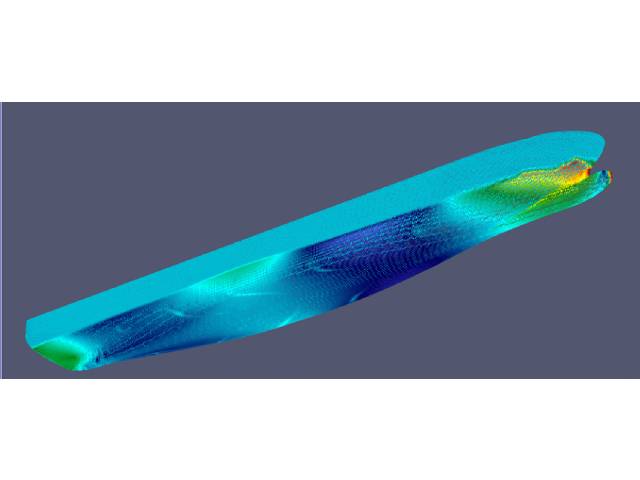One of the values which has been core to C-Job Naval Architects way of doing business is being client focused. The company co-creates its designs together with the client and believes their involvement throughout the process benefits the end product. Never one to limit itself in what it can offer, C-Job recently ventured into Computational Fluid Dynamics.
Computational Fluid Dynamics
With any design, it is important to consider aspects such as the resistance of the hull as well as the ship’s motions. Using empirical equations to estimate the resistance can be difficult, especially in the case of unique designs which will be used for a single ship design – rather than a series or when there is no reference ship available. This is where Computational Fluid Dynamics (CFD) comes in. CFD provides a virtual simulation of the ship’s behavior in a fluid or multi-fluid environment.
Computational Fluid Dynamics introduces real world dynamics into a virtual environment where it considers the actual hull shape and desired operations of the design.
While C-Job Naval Architects always used CFD in its designs, it is only recently the company ventured into doing CFD themselves. Raffaele Frontera, Naval Architect at C-Job, and Jethro de Vries, Lead Naval Architect at C-Job, are spearheading this new service at the company.
Raffaele Frontera says “Computational Fluid Dynamics is important with every design and we’re always keen to improve our skills which is why we wanted to expand our knowledge and simulations in-house. Thanks to this, we can now integrate CFD into our optimization stream by performing CFD optimizations based on genetic algorithms, improving design results even further and at an earlier stage.”


Purpose informs the process
With CFD it is important to know the purpose and the characteristics of the to best identify what kind of calculation is needed. The purpose dictates what kind of solver is needed.
Jethro says: “When performing CFD we need to know the design boundaries, coming from the operational profile. These boundaries can result in size limitations or the vessel’s design speed limit.
“Based on that info we need a hull shape which is usually either provided or is designed by C-Job. The hull shape will be meshed, which is the most difficult process of at least the viscous flow solver. The hull shape should be in perfect condition with no openings or double objects.”
Afterwards the solver runs and once finished post-processing will be done which allows a visual representation and to check the numerical results make sense.

Potential flow solver vs viscous solver
Each project is unique and requires a tailored approach.
C-Job has access to two different types of solvers: a potential flow solver (Rapid) and a flow solver (Numeca and OpenFOAM).
The first two software mentioned are commercial; the potential flow solver is used to determine the best global hull shape for the job. The viscous flow solver is used to determine the interaction between hull and propeller – wake flow and optimization of the aft ship including motion analysis.The other viscous solver is an open source solver called OpenFOAM which is used for research purposes.
Added value to new builds and modifications
CFD can be used across a multitude of projects – not just for new builds. Modifications can also benefit from CFD and thanks to the flexibility of having access to multiple solvers, C-Job offers tailored support.
Jethro says “Whether CFD is used for modifications or new build projects, CFD is relatively cheap and fast. Though the solver will run for quite some time, it is a lot

cheaper than doing a towing tank test. Especially in the early design stage, CFD will help optimize the hull shape which will result in a competitive vessel.”
Raffaele says: “We want C-Job to be able to use CFD as a tool to support greener shipping, reducing fuel consumption, and CO2 through optimization of the hull.”









































